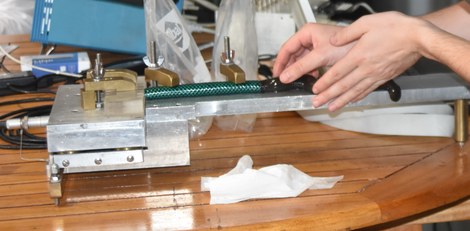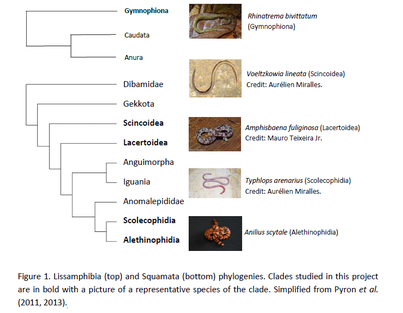The evolution of burrowing in limbless tetrapods
Project focus
My PhD project focus on the evolution of the locomotion in limbless burrowing tetrapods. Despite the description of a new and unique mode of locomotion in a burrowing caecilian in 1971, the locomotor system of limbless tetrapods has received little attention. During my PhD, I will study the morphology (using µCT-scans, dissections, and geometric morphometrics), the movements of the vertebral column and skin during burrowing under different conditions (using cineradiography) and the force generating capacity of representative limbless tetrapods (using force plate). By considering these data within a phylogenetic framework, I will explore to what degree functional and anatomical traits associated with burrowing are the result of convergent evolution across the different limbless tetrapods clades. That information will finally form the basis for defining structural and mechanical traits that are crucial for designing prototypes to test additional hypotheses on adaptive evolution. In the future, the results of this PhD project may be further explored to design bio-inspired robots with burrowing capacities.

To measure burrowing forces, animals (here a Typhlonectes compressicauda) are introduced in a tunnel where they will move forward and push against soil positioned on a force platform. The maximum force is then recorded in three directions (x,y,z) on a computer.
Keywords
Evolutionary Biology - Functional Morphology - Limbless Vertebrates - Shape Evolution - Comparative Analyses
Researchers: Aurélien Lowie, Anthony Herrel (co-PI), Dominique Adriaens (PI)